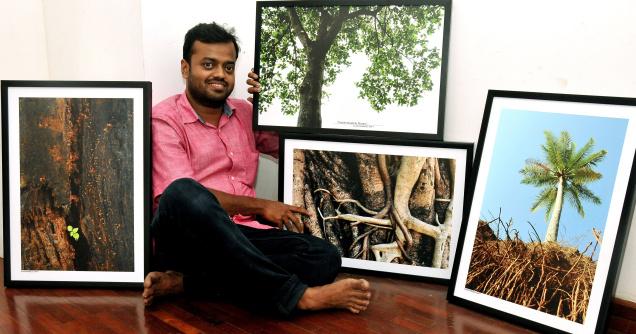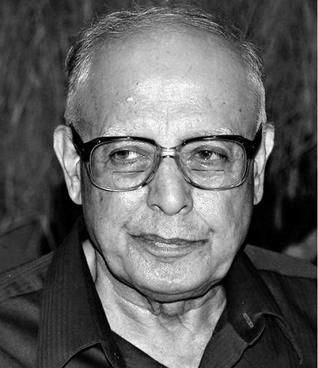
Leaves, often never given a second glance, are the principal characters of Safi’s photographs
Leaves — ever present and taken for granted—are Mohammed Safi’s focus. His photographs capture leaves in all their moods — green and vital; flushed red, crimson and yellow, smelling of autumn; and finally, brown, wrinkled and dying. “Ela Illathe Illa” (Without Leaves, Nothing) — 36 photographs of Safi, a freelance photographer, are on show at the Kerala Lalithakala Akademi Art Gallery.
Noticing leaves
“We might often sit under a tree’s shade and also eat its fruit. But the possibilities of leaves as fine art is often missed upon us,” Safi explains why he zeroed in on leaves. Abundant and everywhere as they are, Safi never went questing for his frames. Instead, they are drawn from everyday life. Images struck him on routine journeys, enticed him to stop, pull out his Nikon D200 and click. And his camera has caught the minute and the mammoth. One show is the photograph of an aging wet bark. But sprouting from its middle are two fresh leaves and glued to it is a rain drop. “When you see such a sight, you realise the poetry in nature. You also become aware of the possibilities of art,” he says.
Safi’s photographs capture poignancy, often arresting the moments between life and death. On show is a low-angle shot of a coconut tree on the edge of a beach, baring all its root. A day later, says the photographer, the tree was uprooted and washed away by the waves.
Most photographs speak of summer and sunshine. A few capture leaves drenched in rain. One frame merely has fallen acacia leaves lying listlessly in still waters. Quite like the dead leaves, imperfect ones — torn and blighted — make Safi’s frames. In a couple of photographs, leaves chipped and eaten at the edges are the centre. So too are trunks cut away at the middle. “Trees are categorised by their resourcefulness. For us coconut and rubber are lucrative. I am constantly instructed to clear the worthless trees in the yard. But I let them grow,” says Safi.
Among his photographs are trees and plants growing on the banks of the Bharatapuzha and those flourishing on clay tile roofs.
Inspiring environment
Safi finds most of his frames in and around Malappuram and Thrissur. A potent environment for him is the Thekkinkkadu maidan in Thrissur with its towering trees. Low-angle shots capture trees and leaves in different seasons giving the frames the feel of a canvas. The clutch of photographs on the maidan shows sweeping branches with full green leaves and so too wet and yellow ones.
The exhibition is on till February 12 from 11 a.m. to 7 p.m. at the Kerala Lalithakala Akademi Art Gallery.
source: http://www.thehindu.com / The Hindu / Home> Features> MetroPlus> Events / by P. Anima / Kozhikode – February 07th, 2014



















